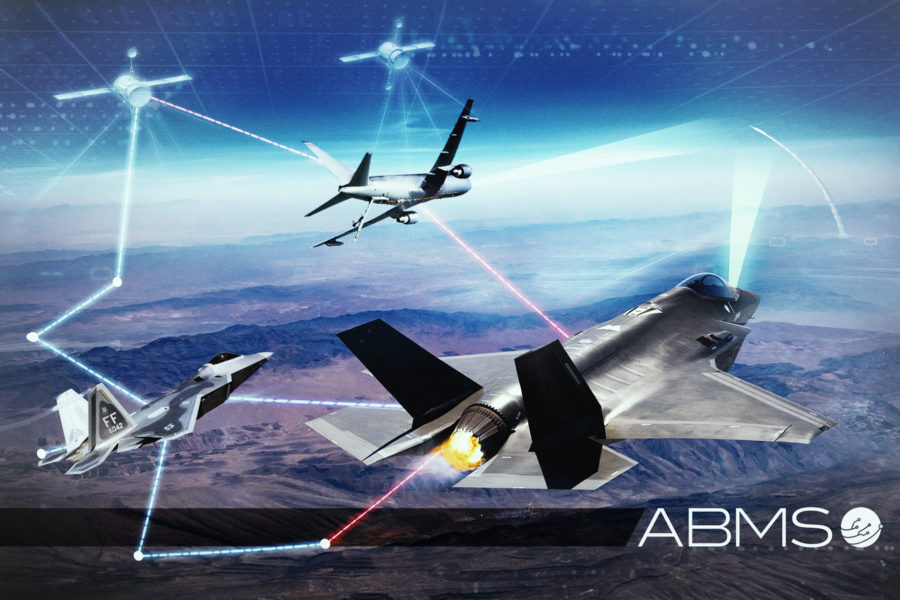The Air Force is ready to start buying some of the technology that will make up the Advanced Battle Management System, moving the program from theory into development.
“Nearly two years of rigorous development and experimentation have shown beyond a doubt the promise of ABMS,” Chief of Staff Gen. Charles Q. Brown Jr. said in a May 21 release. “We’ve demonstrated that our ABMS efforts can collect vast amounts of data from air, land, sea, space, and cyber domains; process that information; and share it in a way that allows for faster and better decisions.”
ABMS, which was conceived as a replacement for the canceled E-8 Joint STARS recapitalization program, is envisioned as a network of sensors and connected technologies intended to promote rapid data sharing among a plethora of weapon systems. ABMS is really a new way of fighting that will provide the “backbone of a network-centric approach to battle management.”
Brig. Gen. Jeffery D. Valenzia is director of Joint Force Integration and head of the cross-functional team responsible for establishing the manpower, resources, and doctrinal infrastructure for the ABMS program. “Command and control is as timeless as warfare,” Valenzia said. “As the character of war changes, so, too, does the art and science of C2. In a data-dependent and data-saturated world, victory belongs to the side with decision superiority—the ability to sense, make sense of a complex and adaptive environment, and act smarter, faster, and better.”
Under this next ABMS phase, the Department of the Air Force’s Rapid Capabilities Office will begin to field and install equipment and software on existing military aircraft, beginning with new communications “pods” for the KC-46 Pegasus tanker. In effect, these will become an airborne hotspot connecting USAF’s fifth-generation F-22 and F-35 fighters so they can communicate with each other in real time.
Will Roper, who was then USAF’s assistant secretary of acquisition, predicted in December that the KC-46 pod was the most likely ABMS capability to be deployed soon. And, Air Mobility Command boss Gen. Jacqueline D. Van Ovost alluded to a new concept of operations for tankers, now dubbed “Capability Release #1,” during an April virtual event hosted by AFA’s Mitchell Institute for Aerospace Studies. “Why wouldn’t we change the calculus by doing different things, moving away from the antiquated view that AMC just brings stuff when they’re called … to be a maneuver force inside the threat ring?” Van Ovost asked.
In addition to outfitting the KC-46 with the communications pod, Randy Walden, program executive officer for the Rapid Capabilities Office, said the department is gearing up a host of other new digital capabilities.
“To build ABMS, you must first build the digital structures and pathways over which critical data is stored, computed, and moved,” he said in the release. “The Department of the Air Force needs a smart, fast, and resilient ‘system of systems’ to establish information and decision superiority, and ABMS will be that solution.”
The Air Force will invest $170 million this fiscal year in ABMS and wants to ramp up funding over the next five years.
But lawmakers remain skeptical. “While the committee continues to support the Air Force’s new approach to command and control, the committee notes that the ABMS requirements and acquisition strategy remain unclear,” wrote members of the Senate Appropriations Committee in November 2020.
The Air Force department’s 2022 budget request, expected out next week, may add clarity to its investment plans. Senate appropriators last year directed the Air Force to “submit [with its 2022 budget request] a report summarizing all related programs in communications, battle management command and control, and sensors that fall within the ABMS umbrella across the future years defense program.”
The Air Force has said the first phase of the ABMS program would last into the early 2020s, but Congress also wants a more specific timeline for when the program will reach initial operational capability.
Program managers emphasized in the May 21 release that “the goal is speed and utility,” falling in line with Brown’s directive to “accelerate change or lose.” As such, whenever possible, components of ABMS will be derived from commercially available technology, requiring a close working relationship with industry. As of late last year, there were nearly 100 companies involved in the program.
“This ability gives us a clear advantage, and it’s time to move ABMS forward so we can realize and ultimately use the power and capability it will provide,” Brown said in the release.
